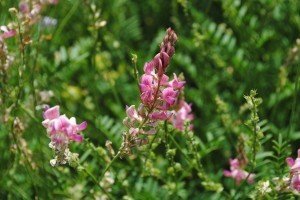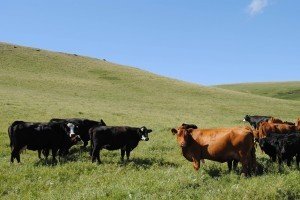Here are five things you should know about ecosystem services, and you can learn more on our new website: www.ecosystemservices.abmi.ca!
1. Ecosystem services are benefits provided by natural systems that contribute to our well-being and health.  The ABMI, through the Ecosystem Services Assessment project, has come up with ways to measure these benefits so that they can be used in land use planning, sustainability reporting and even in markets where units of ecosystem services can be bought and sold.
The ABMI, through the Ecosystem Services Assessment project, has come up with ways to measure these benefits so that they can be used in land use planning, sustainability reporting and even in markets where units of ecosystem services can be bought and sold.
2. Economic value is a key measure of nature’s benefits. For example, the pollination of crop plants by bees and other insects is a vital ecosystem service, with significant impacts on national economies. In Alberta, wild bees provide a substantial contribution to canola production in agro-ecosystems that support healthy bee populations. While the economic value at a provincial scale is great – likely over $100 million annually – the regional and local benefits of pollination are unclear. We’re collecting bees throughout the province to better understand the distribution and abundance of these vital species.
3. Water purification services provided by healthy upstream landscapes can be assessed by understanding the movement of water, nutrients and sediment. One way to estimate the value of water purification is to calculate the cost savings if fewer nutrients, such as nitrogen and phosphorus, reach water treatment plants, thus reducing the need to remove these nutrients. Because the computer model we used to assess water purification is connected to land cover data, our assessment approach can tell you how this ecosystem service changes based on land cover – so you can discover how your part of the province contributes to high or low water quality!
4. Alberta is well known for its beef production and iconic prairie landscapes. But world-class beef isn’t the only benefit from rangelands in the province.  Rangelands also store large amounts of carbon, both above and below ground. The ESA project uses established formulas to assess two ecosystem services highly pertinent to Alberta’s Grassland and Parkland Natural Regions: native grassland forage production (estimated at 5 million tonnes per year), and soil carbon stored in native prairie (approximately 115 million tonnes). The rangeland forage and carbon models can be used to explore how different land use scenarios, such as conversion to crops and grazing intensity, can affect carbon storage in Alberta’s rangelands.
Rangelands also store large amounts of carbon, both above and below ground. The ESA project uses established formulas to assess two ecosystem services highly pertinent to Alberta’s Grassland and Parkland Natural Regions: native grassland forage production (estimated at 5 million tonnes per year), and soil carbon stored in native prairie (approximately 115 million tonnes). The rangeland forage and carbon models can be used to explore how different land use scenarios, such as conversion to crops and grazing intensity, can affect carbon storage in Alberta’s rangelands.
5. We have a team of experts in Alberta that are developing a system to assess and map ecosystem services across Alberta to better understand how planning and management decisions affect the provision of ecosystem services to Albertans. Resources, such as maps and videos, are fostering a better understanding of ecosystem services – and their benefits for all Albertans.
Be sure to check out www.ecosystemservices.abmi.ca and update your bookmarks!

